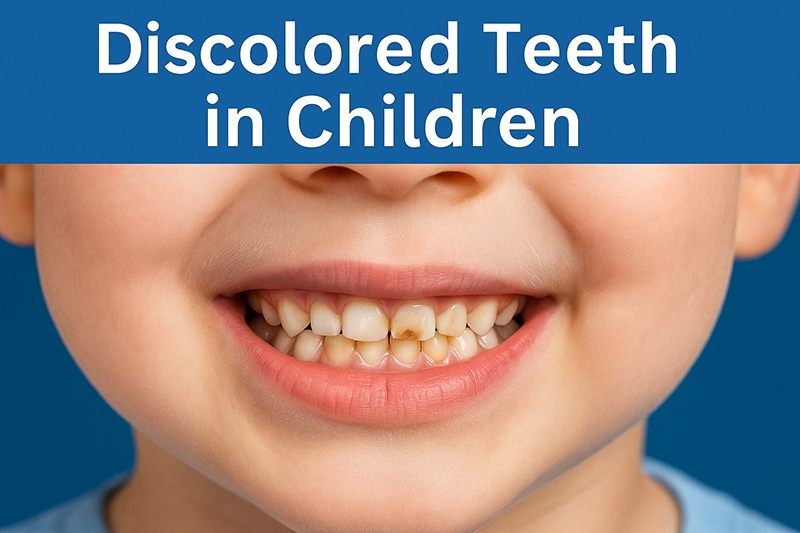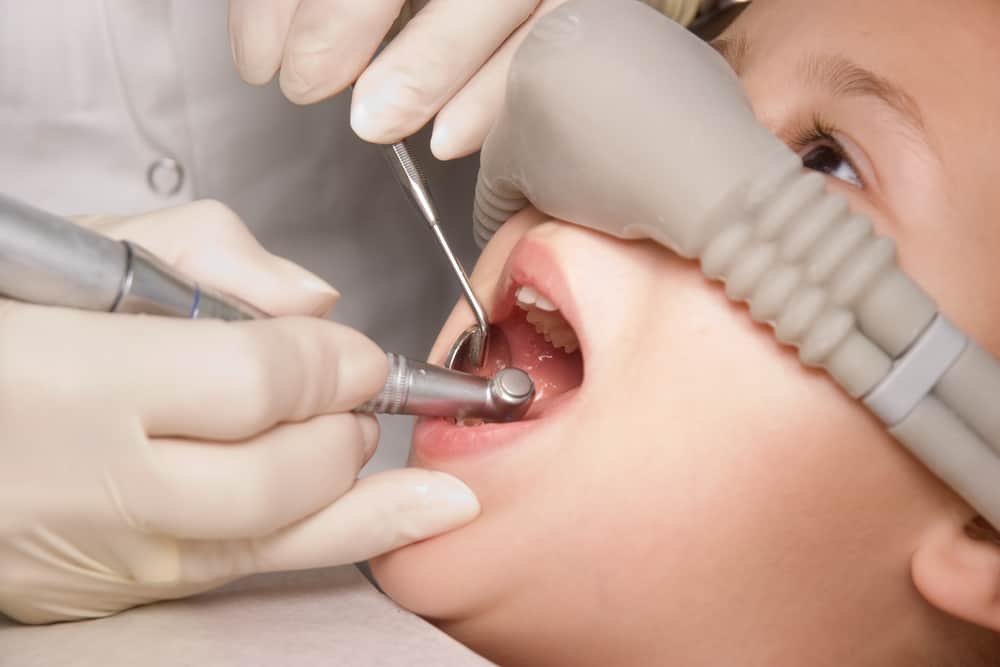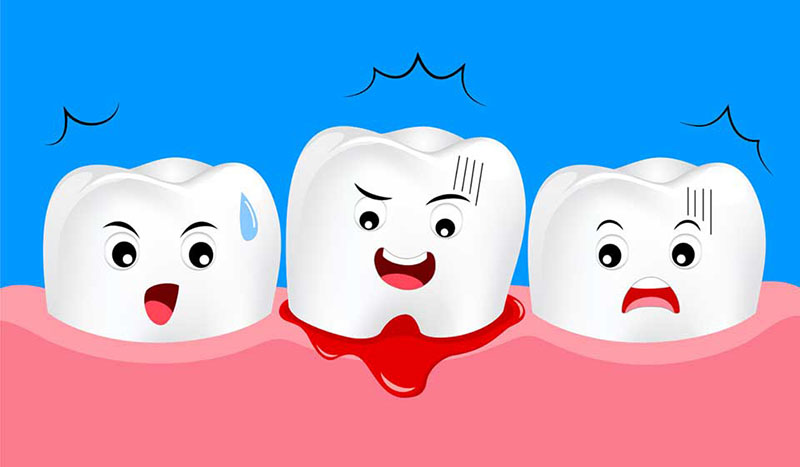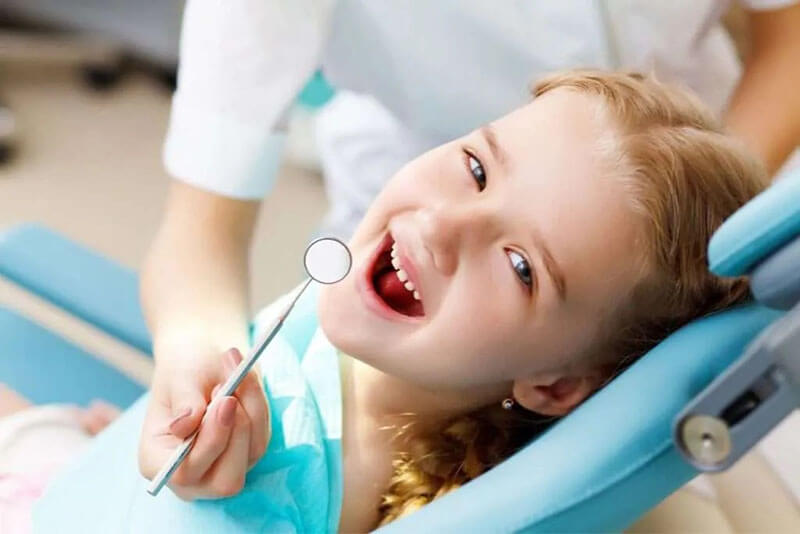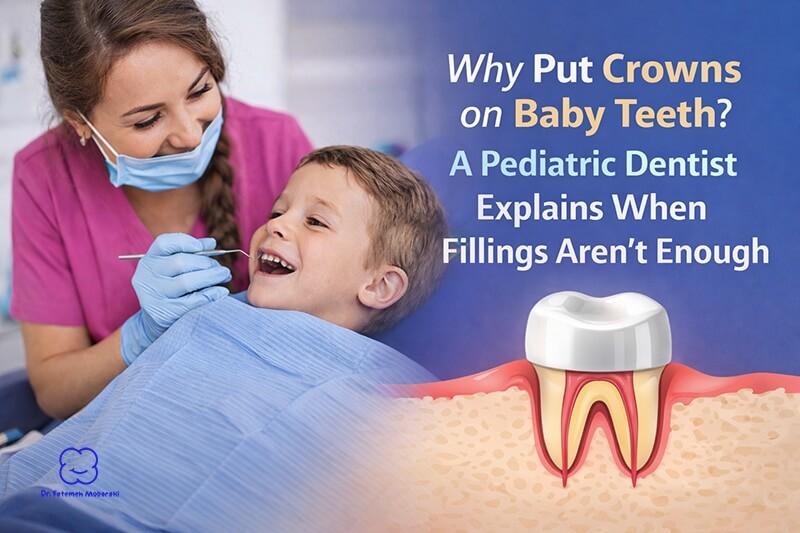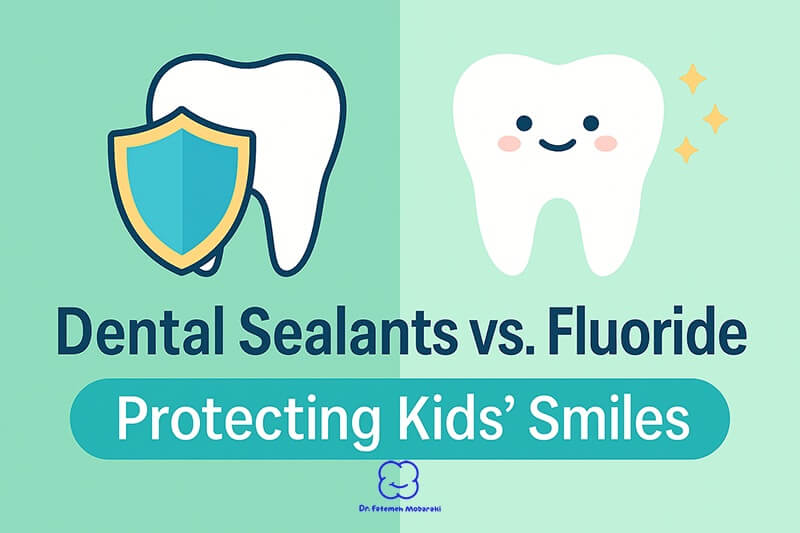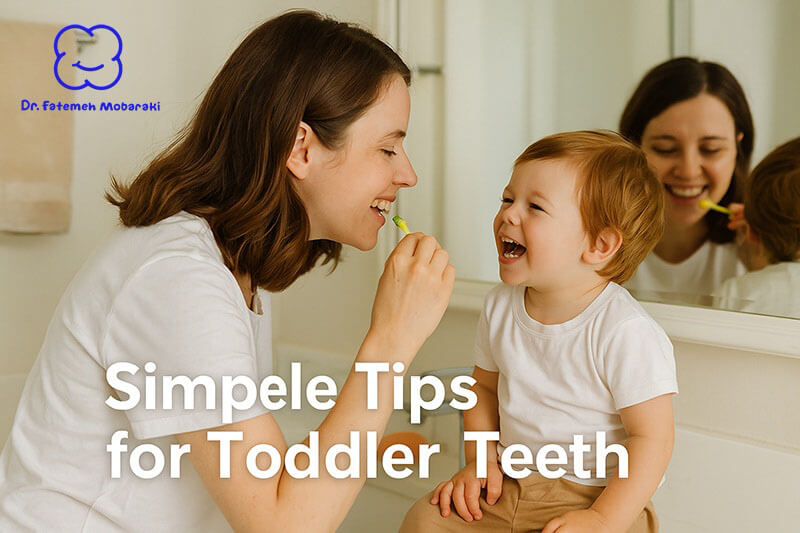As a pediatric dentist in Dubai, I often meet worried parents asking about the discoloration of their children’s teeth. If you’ve noticed discolored teeth in children, including your own, rest assured—you’re not alone. Let’s talk about what causes discolored teeth in kids and how we can tackle this issue together.
What Counts as Normal Discoloration?
Not all discoloration means something is wrong. In fact, there are a few perfectly normal reasons why your child’s teeth might not look sparkling white:
- Adult teeth are naturally more yellow: When permanent teeth start coming in, they can look more yellow next to remaining baby teeth. This is totally normal due to the natural color of the dentin layer underneath.
- Temporary surface stains: Sometimes food, drinks, or even iron supplements can temporarily stain teeth but don’t indicate a problem. These can often be removed with a good cleaning.
- Mild fluorosis: Very light white streaks or specks caused by fluoride overexposure are usually harmless and cosmetic only.
Unless the discoloration is accompanied by pain, sensitivity, or rapid change, there’s often no need to worry. Your pediatric dentist can always evaluate it just to be sure.
Discolored Teeth in Children: What Causes It and What to Watch For
| Common Causes | Recommended Actions |
|---|---|
| Poor Oral Hygiene | Brush twice daily with fluoride toothpaste |
| Food and Drink Stains | Rinse or brush after meals |
| Medication Side Effects | Consult your dentist or pediatrician |
| Trauma and Injury | Immediate dental evaluation |
| Excessive Fluoride (Fluorosis) | Monitor fluoride intake |
| Tooth Decay | Early dental intervention |
| Weak Enamel | Regular dental check-ups and fluoride treatments |
| Newborn Jaundice | Consult your pediatrician |
| Serious Illness | Immediate medical evaluation |
| Chromogenic Bacteria | Professional dental cleaning and probiotics |
| Bile Drainage Issues | Medical evaluation by a pediatrician |
| Adult Teeth vs. Baby Teeth | Usually no action needed |
1. Poor Oral Hygiene
One of the primary reasons for discolored teeth in children is inadequate brushing. Plaque, a sticky film of bacteria, can quickly build up and eventually harden into tartar, giving teeth a yellow or brown appearance. Regular and thorough brushing twice daily for two minutes with fluoride toothpaste is key to preventing this issue.
Golden Tip: Regular brushing and good oral hygiene practices significantly reduce discoloration due to plaque and tartar.
2. Food and Drink Stains
Foods and drinks like berries, tomato sauce, juices, and even some medications can stain teeth because children’s enamel is more porous. Simply rinsing with water or brushing after meals can reduce this staining considerably.
Golden Tip: Encourage rinsing or brushing after consuming staining foods and drinks.
3. Medication Side Effects
Some medications, such as tetracycline antibiotics taken during pregnancy, or iron supplements given to children, can cause teeth discoloration. If you suspect medication might be the cause, speak to your pediatric dentist or pediatrician.
Golden Tip: Medications can cause tooth discoloration; consult your dentist for guidance.
4. Trauma and Injury
Children often experience accidents that can injure teeth, causing discoloration such as a gray or pinkish hue. Sometimes, these teeth heal naturally, but occasionally, professional dental intervention may be necessary.
Golden Tip: Dental trauma should always be evaluated by a pediatric dentist.
5. Excessive Fluoride (Fluorosis)
Using fluoridated water in infant formula can occasionally result in white streaks or spots on teeth, a condition known as fluorosis. Moderating fluoride intake is crucial to preventing this.
We’ve written more about this in detail here: Fluorosis in Children.
Golden Tip: Balance fluoride intake, especially for infants, to prevent fluorosis.
6. Tooth Decay ( cavities )
Cavities are another common culprit behind discolored teeth in children. Early decay appears as white spots, then progresses to darker stains or visible cavities. Prompt dental care is vital to prevent further damage.
Golden Tip: Early detection and treatment of tooth decay are essential.
Concerned about tooth stains or early decay?
Let’s take a look before it becomes a problem—schedule your child’s visit today.
7. Weak Enamel
Some children have genetically weak enamel, making their teeth more vulnerable to discoloration and decay. Regular dental check-ups and preventive fluoride treatments can strengthen enamel and reduce discoloration risks.
Golden Tip: Regular check-ups and fluoride treatments help manage weak enamel.
8. Newborn Jaundice
Babies who experience jaundice shortly after birth might develop green or yellow-tinted teeth. Consult your pediatrician for proper medical evaluation and monitoring.
Golden Tip: Jaundice-related discoloration should be monitored by medical professionals.
9. Serious Illness
Conditions such as congenital heart disease or hepatitis can sometimes cause noticeable tooth discoloration. If you suspect your child has a serious illness, immediate medical evaluation is necessary.
Golden Tip: Serious illnesses require prompt medical attention and monitoring.
10. Chromogenic Bacteria
Certain bacteria can stain teeth dark gray or black. Professional cleanings can remove these stains, but they may recur. Using probiotics can sometimes help manage this bacterial staining.
Golden Tip: Professional cleaning and probiotics can manage bacterial staining effectively.
11. Bile Drainage Issues
Issues with bile drainage, such as liver problems, may lead to teeth discoloration. Medical evaluation and treatment by your pediatrician are important in these cases.
Golden Tip: Consult your pediatrician for evaluation and management of bile-related discoloration.
12. Adult Teeth vs. Baby Teeth
When adult teeth begin to appear, parents sometimes worry because they look more yellow compared to the baby teeth. Adult teeth naturally have more yellowish dentin visible beneath translucent enamel, so this difference is normal and typically not a cause for concern.
Curious why permanent teeth often look more yellow? Read more in our blog: Why Are Adult Teeth Growing Out Yellow in Kids.
Golden Tip: Yellowish adult teeth replacing white baby teeth is normal.
When Tooth Discoloration in Kids Is a Red Flag
If your child’s tooth discoloration is accompanied by any of the following signs, it may indicate a more serious issue:
- Sensitivity to hot or cold
- Pain when chewing or brushing
- Visible pits, holes, or rough spots on the teeth
- Sudden darkening or grayish color after a fall or injury
- Discoloration limited to one or two teeth
- Signs of infection like swelling, pus, or fever
These symptoms suggest it’s time to consult a pediatric dentist right away.
When Should You Take Your Child to the Dentist for Discoloration?
Even if no red flags are present, it’s important to schedule regular dental checkups starting from your child’s first birthday. A pediatric dentist can:
- Monitor your child’s oral development
- Catch early signs of discoloration or decay
- Offer preventive treatments like fluoride varnish or cleanings
- Educate parents on proper hygiene routines and habits
Don’t wait for something to go wrong—routine visits build lifelong dental confidence and catch small issues before they grow.
Golden Tip: Regular dental checkups are essential, even when there are no visible problems. Early care leads to better oral health outcomes.
How to Manage Discolored Teeth in Kids
Here are practical steps parents can take to manage and prevent discoloration:
- Limit Bacteria Transmission: Avoid sharing spoons or cleaning pacifiers with your mouth, as this can transfer bacteria that contribute to tooth discoloration and decay.
- Ensure Proper Brushing: Brush twice a day for two minutes using fluoride toothpaste. Supervise younger children until they’re about six years old.
- Watch Their Diet: Limit foods and drinks that stain. Encourage immediate rinsing or brushing after consuming staining items.
- Regular Dental Visits: Professional cleanings remove plaque, tartar, and surface stains. Your dentist can also advise on treatments if needed.
- Prevent Bottle Decay: Never let your child sleep with a milk or juice-filled bottle. Clean teeth gently after feeding. See our full guide: Baby Bottle Tooth Decay
Golden Tip: Good oral hygiene, dietary adjustments, and regular dental visits are key to managing and preventing tooth discoloration.
Final Thoughts
While discolored teeth in children can initially cause alarm, understanding the causes helps parents approach the situation calmly and effectively. Most discolorations are manageable with good oral care practices and professional dental guidance.
As a pediatric dentist, I’m always here to help you navigate these concerns and ensure your child’s smile stays healthy and bright.
1. Is it normal for my child’s teeth to look yellow sometimes?
Yes, in many cases it’s completely normal—especially when adult teeth are coming in. They naturally contain more dentin, which gives them a slightly yellowish tone compared to baby teeth.
2. Can tooth discoloration in kids go away on its own?
Some types can, like surface stains from food or minor trauma. However, persistent or worsening discoloration should always be evaluated by a pediatric dentist to rule out decay or other concerns.
3. Should I be worried if only one of my child’s teeth is discolored?
Yes, if a single tooth turns gray, brown, or black, it could be a sign of trauma, decay, or infection. It’s best to book a dental visit to get it checked as soon as possible.

